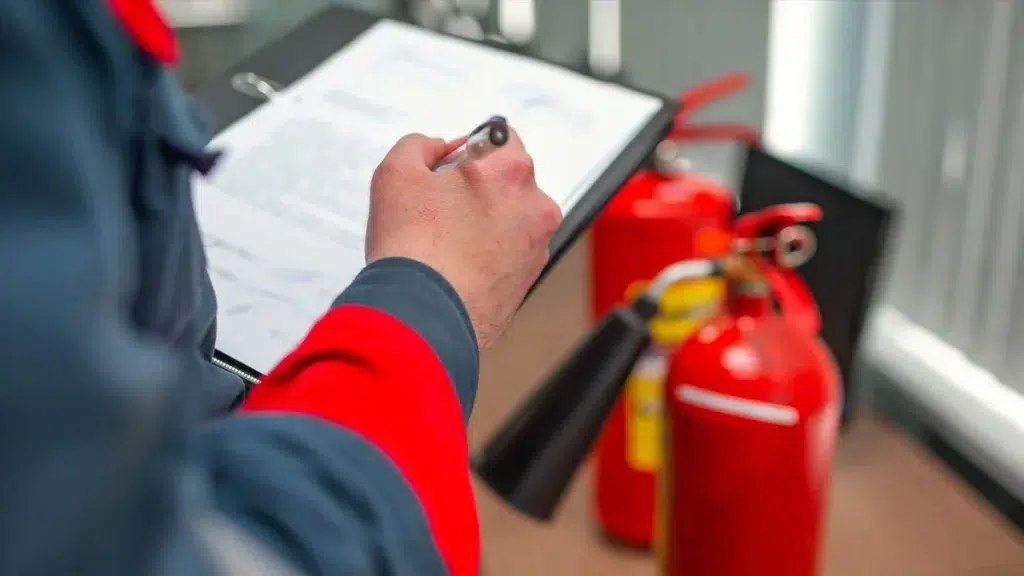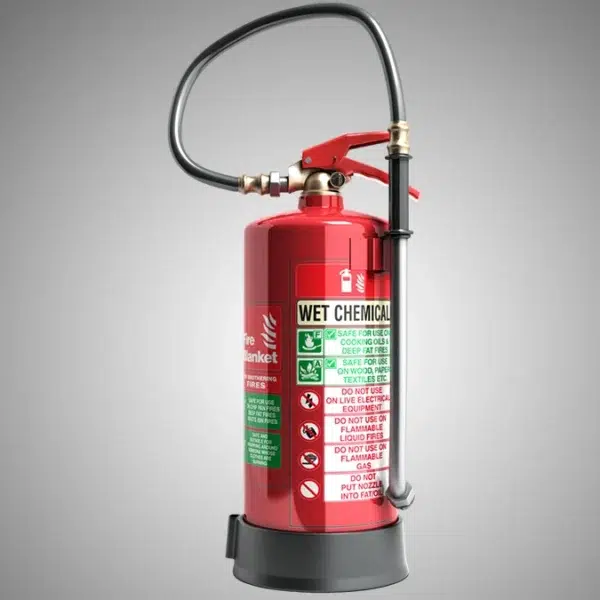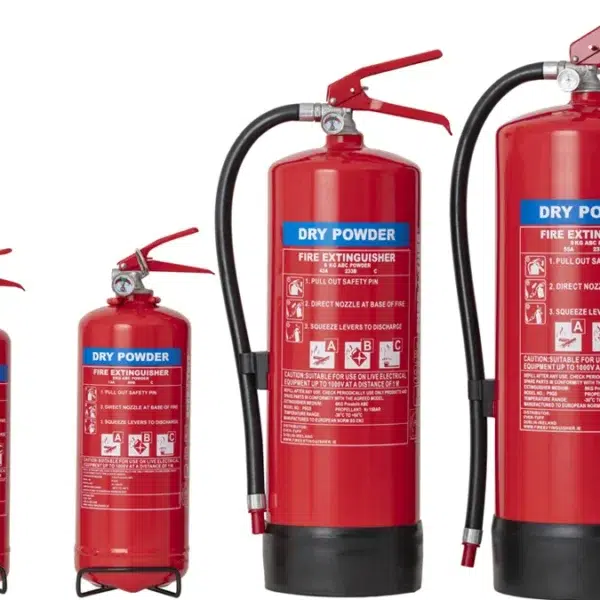Top 10 Fire Safety Tips for Office

Office fire safety is very important for a secure and productive workplace. Within minutes, a fire can spread, seriously harming your staff and causing serious damage to your property. To maintain a safe workplace needs attention to fire safety best practices. In this article, we discuss the top 10 fire safety tips for office fire safety to help businesses cover everyone from regular fire risk assessments to making sure your staff members are properly trained in evacuation procedures.
What are Fire Safety tips?
Fire safety tips are bits of knowledge that can be introduced to fire safety procedures to keep a safe and hazard-free environment and protect you and others from fire incidents. To ensure fire safety, it’s important to be familiar with fire safety guidance and other fire-preventive measures, regardless of your position—office manager, public sector employee, or home.
Dry Powder Fire Extinguishers: A Complete Guide
Top 10 fire safety tips for office fire safety
1. Regular Fire Risk Assessments
A regular fire risk assessment is the basis of your life and your business life safety. It identifies potential fire risks, considers the risks they pose, and implements actions to decrease or eliminate those risks. This procedure has to be dynamic, evaluated, and changed regularly to take into changes to your business’s activities or place of business.
2. Installation and Maintenance Fire Detection Systems
The early fire detection system is very important to prevent fires from spreading. Each office must have fire detection and alert systems and do you confirm regularly that these are working perfectly? Make sure to regularly test and maintain these systems to ensure they are in good working order and can be heard by everyone around the office.
When Should You Refill Your Fire Extinguisher?
3. Confirm Easy Access to Fire Extinguishers
Fire extinguishers also play an important role in case of a fire. Place them carefully throughout your property, especially near electrical equipment and in high-risk locations for fire, like kitchens and storage rooms. Ensure that every employee is aware of the extinguishers’ location and proper use.
4. Train Employees on Fire Safety System
Maintaining a safe workplace is largely the responsibility of your employees. To make sure that they have been trained for fire safety, conduct regular fire safety training. This training must include how to use fire extinguishers, the importance of keeping exits clear, and safe evacuation procedures.
5. Have Regular Fire Drills
At least once a year, include fire drills in your work every day to make sure all staff members are aware of what to do and where to go in case of an emergency. If there are any important changes made to the evacuation routes, conduct a fire exercise sooner rather than later. Practice an evacuation, note what went well and what didn’t, and make adjustments. Share your successes with everyone and continue to practice till you reach your full abilities. To ensure that every fire drill is fully observed, you could also want to hire a specific fire guide.
6. Keep Fire Exits and Escape Routes Clear
Fire exits and escape routes take people to a place of safety because of clear signs, are free from obstruction at all times, and are well-lit.
Persons should know about the best and quickest route out to the site of the assembly end. In an emergency, they can then act swiftly in an emergency without panicking, and finding a clear path to safety can make all the difference.
Every day, exit doors must be checked to make sure that they are unlocked and nothing behind to hinder an evacuation.
Keep the fire doors closed. Make sure the fire doors are not stuck open; they are there to stop the spread of fire and to safeguard routes.
All emergency exits and routes need to have enough lighting. Include lights at every main entrance, hallway, floor level and direction change, stairwell, and next to fire fighting equipment and sirens. Make sure you routinely check the emergency lighting.
All fire safety signs need to have visuals so that anyone can easily understand them. Make sure they have sufficient lighting so that, even if there is of a power outage, they can be recognized during an emergency.
Returning to the building, even to find things, should be avoided until it feels safe to do so.
7. Electrical Safety
If you work in an office, you’re covered by electrical equipment like computers, printers, photocopiers, and desk lamps. But did you know these can be a main fire hazard? Many office fires start because of faulty wiring or malfunctioning devices.
- Turn off all electrical appliances – Always switch off computers, printers, and other equipment at the end of the day to prevent overheating and fire risks.
- Don’t overload circuits – Plugging too many devices into one socket can cause overheating and increase fire hazards. Use outlets responsibly.
- Keep electrical control panels accessible – In an emergency, you don’t want to waste time moving obstacles. Keep these areas clear and properly marked.
- Report electrical faults – Faulty wiring or malfunctioning equipment can cause fires. Report any issues immediately and ensure regular equipment checks.
- Maintain machines properly – Regular maintenance prevents overheating and sparks, reducing fire risks. Stay on top of servicing office machines.
A little caution goes a long way in keeping your office safe!
8. Store Flammable Materials Safely
Chemicals, cleaning products, and some office supplies are examples of flammable materials that should be kept out of ignition sources and in approved storage spaces. To reduce the possibility of these materials burning, use the proper containers and options for storage.
9. Properly store and dispose of hazardous materials:
Put flammable items, such as fuels and solvents, in a well-ventilated section of your workspace. This includes frequently combustible office cleaning products. Set up procedures for getting rid of fuel, flammable solvents, greasy rags, and other chemicals. When handling and getting rid of these things, workers should wear the proper protective clothing and equipment.
10. Collaborate with Fire Safety Professionals
Finally, don’t be afraid to ask professionals in fire safety for guidance. They can provide helpful details about your fire safety procedures, assist you in identifying possible dangers, and recommend the best routes of action. You can make sure that your fire safety precautions are current and conform to the most recent rules and laws by regularly consulting with these professionals.
You may lower the possibility of fire-related incidents and make your workplace safer by implementing these fire safety measures into practice. Don’t forget that fire safety is a continuous process that needs proactive management and consistent attention. You safeguard not just your company but also the lives of your clients and staff by remaining watchful and committed to best practices.
Conclusion
With these office fire safety tips in practice, possible risks can be avoided and safety rules can be followed. Every suggestion, from holding regular fire drills to keeping emergency exits clear, was made to enhance overall safety and preparedness. Your office will be ready to manage fire situations if you follow our professional tips, providing a safer environment for all.
Along with being required by law, keeping fire safety first in the workplace is also a smart business decision. For office fire safety, our in-depth handbook provides easy-to-implement practical advice and practical procedures. Make sure your company is ready for any fire-related incidents by keeping aware of potential hazards. These ten best tips can help you manage a fire-safe environment that encourages trust and peace among your staff members.
https://youtube.com/watch?v=cveuVXqrYq4https%3A



